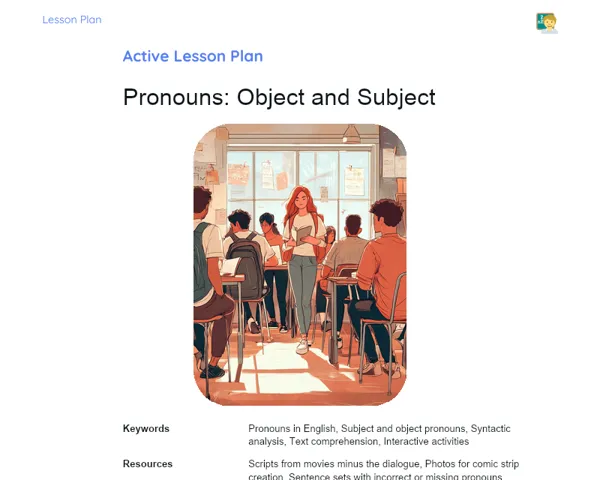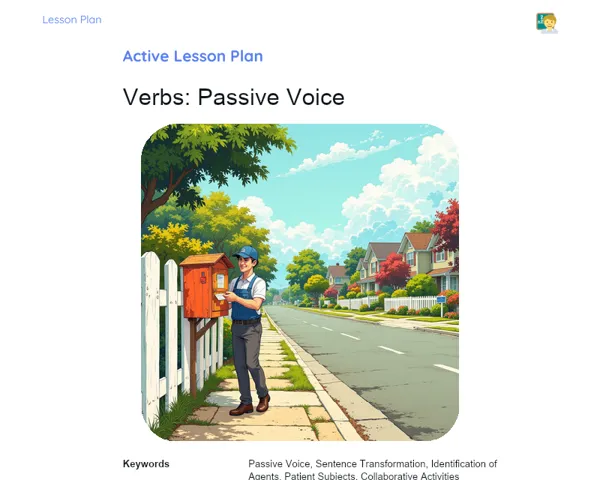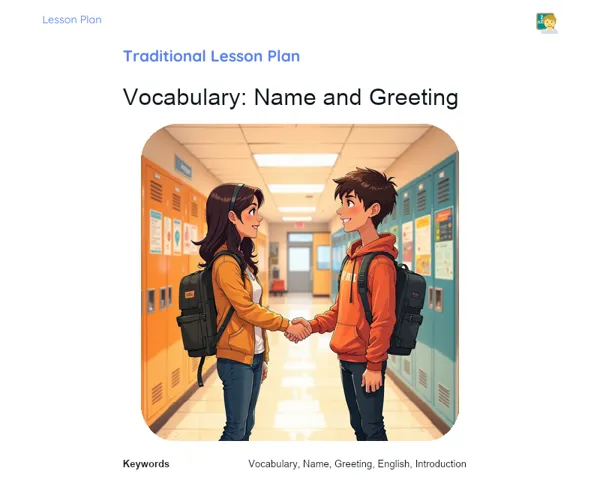Lesson Plan | Active Methodology | Polysemy
| Keywords | Polysemy, English, Context, Communication, Interpretation, Practical activities, Collaboration, Contextual analysis, Polysemous words, Theatre, Word Detectives, Multiple Sentence Builders, Group discussion, Active learning |
| Necessary Materials | Sets of cards with polysemous words, Whiteboard and markers, Scripts for theatre, Access to presentation spaces (if available), Writing materials (notebooks, pens) |
Premises: This Active Lesson Plan assumes: a 100-minute class duration, prior student study both with the Book and the beginning of Project development, and that only one activity (among the three suggested) will be chosen to be carried out during the class, as each activity is designed to take up a large part of the available time.
Objective
Duration: (5 - 10 minutes)
This phase aims to lay a solid groundwork for students to understand and apply polysemy in English. It seeks to ensure they not only recognise the multiple meanings of words but can also discern and use these meanings accurately in various contexts, enhancing their language and communication skills.
Objective Utama:
1. Help students identify and grasp the concept of polysemy in English words.
2. Encourage them to analyse context for the correct interpretation and use of words with multiple meanings.
Objective Tambahan:
- Promote active participation by having students find examples of polysemy in diverse texts and contexts.
Introduction
Duration: (15 - 20 minutes)
The introduction aims to activate students' prior knowledge of polysemy and get them geared up for its practical application. The proposed scenarios encourage critical thinking and real-world application, while the contextualization underscores the significance of understanding polysemy in everyday English usage. This interactive start intends to engage students and highlight the value of mastering polysemy for effective communication.
Problem-Based Situation
1. Imagine your friend from England sends you a message saying 'I saw a bat at the cricket match last night.' How would you interpret the word 'bat' here, considering it could refer to either a flying mammal or a sporting implement?
2. If you were engrossed in a nice novel and the author described someone as 'bright', what would that convey about the character? 'Bright' can mean either 'clever' or 'shiny', depending on how it’s used.
Contextualization
Polysemy is a fascinating characteristic of the English language, where a single word can take on multiple meanings based on context. For example, 'run' can mean to physically jog, to manage a business, or even to function as in 'My computer is running slowly'. Grasping these subtleties is essential for fluency and understanding in both daily life and academics. Additionally, interesting cases like the word 'set', which boasts over 400 meanings listed in the Oxford English Dictionary, illustrate the richness and complexity of polysemy.
Development
Duration: (70 - 75 minutes)
The development section aims to enable students to practically engage with their existing knowledge of polysemy in English. Through interactive and fun activities, they’ll explore how meanings shift based on context, enriching their understanding of language. Each suggested activity is designed not only to reinforce the concept of polysemy but also to cultivate skills in teamwork, communication, and critical thinking.
Activity Suggestions
It is recommended that only one of the suggested activities be carried out
Activity 1 - Word Detectives
> Duration: (60 - 70 minutes)
- Objective: Develop analytical and contextual interpretation skills while fostering collaboration and communication among students.
- Description: In this session, students will take on the role of linguistic detectives, exploring how polysemous words are used across different contexts. Each group will receive a deck of cards, each featuring words like 'light', 'bank', 'book', and they'll need to associate each word with at least two contexts demonstrating distinct meanings. For example, 'light' could mean 'illumination' or 'not heavy.'
- Instructions:
-
Split the class into groups of up to five students.
-
Hand out a set of cards with polysemous words to every group.
-
Encourage students to identify, discuss, and jot down two or more possible meanings for each word based on its various contexts.
-
Each group presents their findings, explaining the contexts where the words could take on different meanings.
-
Conclude with a class discussion to compare group interpretations and clarify any uncertainties.
Activity 2 - Word Theatre
> Duration: (60 - 70 minutes)
- Objective: Encourage a playful exploration of polysemy while promoting an understanding of how context alters word meaning.
- Description: In this creative activity, students will craft and perform short plays where the usage of polysemous words is key to understanding the plot. In groups, they’ll choose a polysemous word and create a short script that delves into various meanings of that word, employing it in ways that could confuse or surprise other characters in the theatre piece.
- Instructions:
-
Organise students into groups of up to five members.
-
Each group selects a polysemous word to work with.
-
The groups create a short script using the chosen word to illustrate its multiple meanings.
-
Each group practises and presents their play, emphasizing the polysemous word in action.
-
After the performances, engage the class in discussing differing interpretations of the words and their impact on the plays’ comprehension.
Activity 3 - Multiple Sentence Builders
> Duration: (60 - 70 minutes)
- Objective: Deepen understanding of polysemy by constructing sentences that illustrate varied meanings in different contexts.
- Description: In this task, students will be challenged to craft sentences that employ polysemous words in ways that unveil multiple meanings across various contexts. Each group will receive a list of words and must create sentences revealing at least two meanings for each word.
- Instructions:
-
Divide the class into groups of up to five students.
-
Provide each group with a set of polysemous words.
-
Groups must formulate sentences showcasing two or more meanings for each word.
-
Each group presents their sentences to the class, detailing the different meanings tied to each context.
-
Encourage class discussion regarding the sentences presented, addressing any uncertainties and underlining context's role in word interpretation.
Feedback
Duration: (10 - 15 minutes)
This stage aims to cement students' learning, allowing them to reflect on and articulate their understanding gained during the activities. The group discussion reinforces comprehension of polysemy in English while fostering communication and argumentative skills. Additionally, hearing from peers broadens students’ perspectives and insights about applying words in different contexts, thereby enriching their language skill set and critical thinking.
Group Discussion
Initiate the group discussion by inviting each group to share their experiences and insights from the activities. Start by asking how they chose contexts for their words and any challenges they faced. Encourage students to articulate how polysemy influenced the narratives in their plays or sentence constructions. Use a whiteboard to take notes on key points discussed, ensuring that everyone gets a chance to contribute and learn from each other’s experiences.
Key Questions
1. What were the biggest hurdles in trying to use words across various contexts?
2. How can understanding polysemy assist in interpreting more complex English texts?
3. Did any moment clarify how context completely altered a word's meaning, and how did that shape communication?
Conclusion
Duration: (5 - 10 minutes)
The goal of this conclusion phase is to ensure students have consolidated the knowledge learned and see the practical significance of polysemy. Summarising the content reinforces their learning, while discussing the link between theory and practice encourages awareness of the topic's relevance in everyday life, urging conscious and contextual use of the English language.
Summary
To wrap up, the teacher should recap the essential points discussed regarding polysemy in English, revisiting illustrative examples and the activities carried out. It’s important to summarise how a word can hold multiple meanings and how context is key in deciding which meaning applies.
Theory Connection
Throughout the lesson, a continuous connection between theory and practice was established, with students applying their theoretical knowledge of polysemy in real-life contexts. Activities like 'Word Detectives' and 'Word Theatre' allowed them to directly observe how meaning can shift in different contexts, solidifying their theoretical understanding through engaging exercises.
Closing
Understanding polysemy is vital not only for studying English but also for effective daily communication. By getting a grasp on this concept, students can sidestep misunderstandings and utilise words more accurately and richly, bolstering their communicative and interpretative abilities. This knowledge will serve them well in future readings, discussions, and interactions in English.



